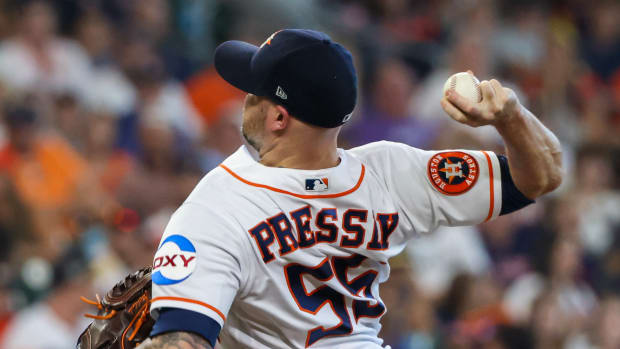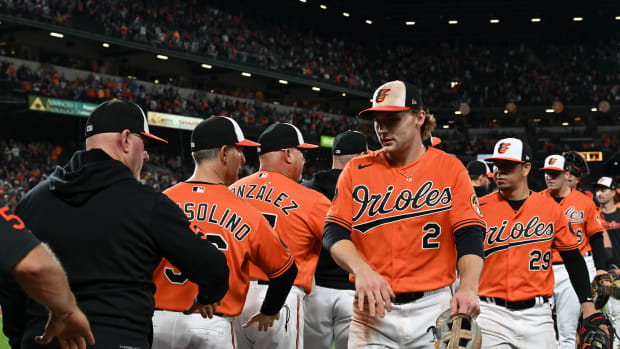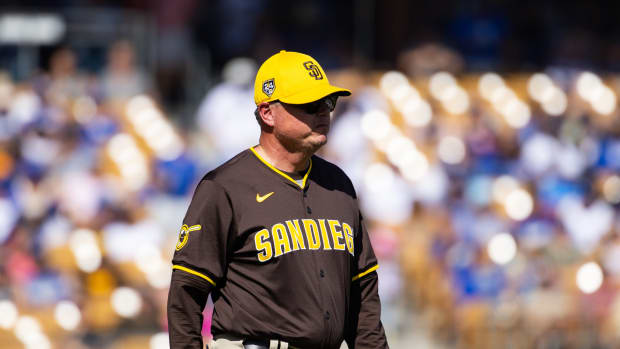Mets Go Bold In Apparently Landing Mariners’ Robinson Canó and Díaz. But Was It Bold Enough?
The New York Mets entered the offseason with a glaring Manny Machado-sized hole in their infield. With David Wright out to pasture, ballyhooed young shortstop Amed Rosario covering less ground than expected, an offense that scored south of 4.2 runs per game in 2017 (12th in the NL), and a new general manager (Brodie Van Wagenen) vowing to spend and contend in 2019, the roster cried out for the slugging ex-AL East middle infielder of Dominican heritage even if it took a 10-year deal paying well above $20 million annually.
You can probably guess where I’m going with this. These, new general manager or not, are the Mets, and when they have a chance to load up their roster with discount facsimiles of the players they should have acquired, by god, they don’t pass it up.
The Mets and Mariners are reportedly close to finalizing a trade that would send second baseman Robinson Canó, all-star closer Edwin Díaz and possibly cash to New York in exchange for outfielder Jay Bruce, reliever Anthony Swarzak, and top prospects Jarred Kelenic and Justin Dunn (at least one report has the Mets including reliever Gerson Bautista). For Seattle, it’s a further concession, following last week’s trade of James Paxton to the Yankees, that the team is embarking on yet another painful rebuild.
VERDUCCI: The New Realities of Being a MLB Hitting Coach
For the Mets? In its composition the swap is a little unusual—it’s really two trades in one. The first: Canó and the five years and $120 million left on the 10-year deal he signed in 2014 in exchange for the two years and $26 million left on Bruce’s contract and the one year and $8 million left on Swarzak’s. Whatever uniform they would wear in 2019, Bruce and Swarzak were unlikely to contribute much; they looked hopeless last year, and they’re on the wrong side of 30. (What Van Wagenen’s predecessor Sandy Alderson was thinking signing both to multiyear deals last offseason, we’ll never know.) So the Mets are essentially adding Canó at five years and $86 million, pending any cash the Mariners might include.
Would Canó get that much on the open market? Probably not. (It’s worth noting that if the Mariners throw in a significant sum of cash, the deal gets far better from the Mets’ perspective.) To get a deal like that, he’d need to project as at least a nine- or 10-WAR player over the next five years; Craig Edwards, writing over at Fangraphs, offered a projection that Canó, given his current production and a normal aging process by baseball standards, will produce 8.5 WAR over the next five years. To date, Canó has aged gracefully. But in the last half-century only four second basemen have produced that much value from their age-36 season onward, and one of them, Randy Velarde, happened to share a trainer with Barry Bonds. The fact that Canó tested positive in 2018 for a diuretic, for which he was suspended 80 games, does not in and of itself suggest a looming performance drop-off. For one thing, Canó actually hit better after his suspension than before it. But teams still might hesitate.
Van Wagenen must be convinced that his onetime client Canó, who produced on roughly a six-WAR pace in his half-season in 2018, will retain that all-star upside in 2019 and 2020. (New York won 70 games in 2017 and 77 games in 2018, so a two- or three-win upgrade doesn’t get the team very far.) He very well may: Statcast shows that he hit the ball as hard as ever in 2018, with 52 percent of his batted balls smoked at 95+ miles per hour; that figure was sixth-best in the majors. But Canó is not 31 or even 33. He’s 36. Mets fans have assuredly not forgotten the 2002 arrival of Roberto Alomar, who had produced at Canó’s level of greatness through his age-33 season. At 34, Alomar fell off a cliff; after a 7.3-WAR season in 2001, he played three replacement-level years, then retired. Why bet on a 36-year-old’s bat when there’s a 26-year-old option? If the Mets wanted six WAR from a middle infielder, they should have just paid Machado.
From the Mets’ standpoint, the other trade within the trade, Díaz for Kelenic and Dunn and possibly Bautista, suffers from a similar ailment. As Seattle’s closer, Díaz had an exceptional 2018—he held opposing hitters to a .160/.229/.241 batting line. Leaning on a 98 mph fastball and a tight slider, he struck out 44% of the hitters he faced. He was among the three or four best relievers in baseball.
But a number of pitchers who were in the next tier below are available as free agents. Craig Kimbrel, for one, plus Adam Ottavino, Cody Allen, and David Robertson. Also on the market are Andrew Miller and Zach Britton, who are not far removed from their own unhittable days. What sense, given just how many ace relief arms are out there, is there in the Mets coughing up prospects rather than cash?
It’s also worth considering some of the pitchers who ranked alongside Díaz as baseball’s best relievers. Think of Oakland’s Blake Treinen, and Milwaukee’s Jeremy Jeffress and Josh Hader. None of them was acquired in a blockbuster deal. Many of the best late-inning pitchers emerge unexpectedly; a creative organization with clever scouts can find a closer without paying through the nose in minor leaguers for one after his career year.
STAFF: Let's Make a Trade for Paul Goldschmidt
We can’t know today whether Kelenic and Dunn stand to have strong big-league careers—prospects can drive you mad—but Kelenic went sixth overall just this past June and hit fairly well in the minors. Have the Mets even shopped the pair around the league to see if there’s a better potential return than Díaz? The team still needs a catcher, a starting pitcher, and plenty of depth.
Say this for Van Wagenen: If acquiring Canó and Díaz has shifted the Mets more firmly into win-now mode, and made them, say, four wins better, he does have the rest of the offseason to find the other five or six wins in upgrades New York will need to contend in 2019. Presumably there is money left to spend, and presumably there are free agents who wish to share a staff with Jacob deGrom and Noah Syndergaard, and presumably Van Wagenen can match those players with the money. Until all that happens, though, the stamp the ex-agent has put on his new team will continue to look drearily similar to all the ones that came before it.



































